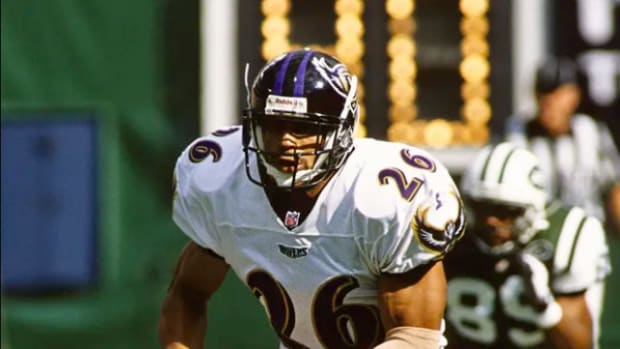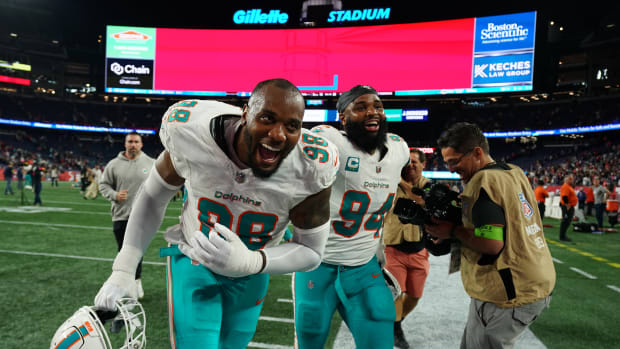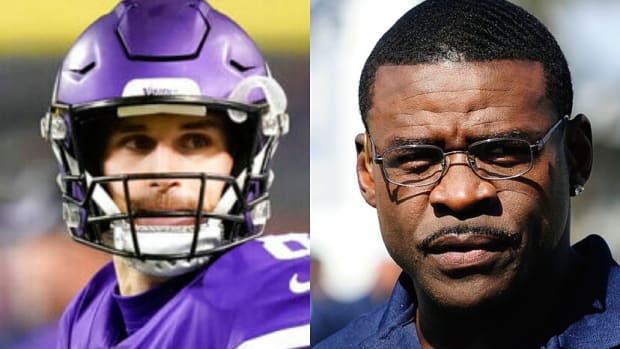Biggest Steals, Reaches From First Round of 2019 NFL Draft
The essence of the NFL draft lies in its unpredictability. Schemes, team needs and scouting philosophies vary across the league, which means different teams’ draft boards inevitably look different from each other. As a result, many players get taken higher than anticipated, and many go lower. That’s not necessarily an indicator of pro success, but every draft invariably offers several players who, for one reason or another, stand out as a reach or a steal. At the time, players like Tyson Alualu, EJ Manuel and Darrius Heyward-Bey felt like they went too high, and those intuitions proved correct. On the flip side, there are examples of players expected to go early in the draft who fell and ended up being high-value choices—Aaron Rodgers, Randy Moss and even Derwin James last year were expected top-10 picks who fell to the late teens or early 20s.
The first round of the 2019 draft was no different. Good players fell and savvy teams snatched them up. Teams desperate to fill needs reached for players who very well may have—or at least should have—been available later. Again, the ultimate success of these picks won’t be determined until several years down the road. But, based on how people around the league have evaluated draft prospects in the weeks and months leading up to the draft, a few selections stood out as high- and low-value plays relative to their pick numbers on Thursday night.
Here are the reaches and steals of the 2019 first round:
REACH: Raiders pick Clelin Ferrell at No. 4
This one came out of nowhere. Mike Mayock came into his first draft as Raiders GM seeking players who fit his and Jon Gruden’s culture, and Ferrell makes sense from a leadership and character standpoint. Still, most evaluators didn’t even have Ferrell in the top 10, let alone the top five. The Raiders chose Ferrell over Josh Allen, who’s widely considered to be a better and more versatile EDGE option, and Devin White, who would’ve slotted in as a leader in the middle of the defense. It’s hard to say the Raiders should’ve traded down without knowing if there was an offer, but it seems very likely Ferrell would’ve been available several picks later.
REACH: Giants pick Daniel Jones at No. 6
Look, you can’t fault the Giants for getting the quarterback they liked best at No. 6. They badly needed a quarterback of the future, so it made sense to get that player at six instead of waiting until 17 and risking that player getting taken. It’s just that at six, Jones seems like a bit of a puzzling choice here, especially when you consider that Dwayne Haskins fell to 15. At Duke, there were times when Jones was just average and didn’t necessarily elevate his teammates to the degree you’d expect from a quarterback taken this high.
STEAL: Redskins pick Dwayne Haskins at No. 15
In the days leading up to the draft, there were rumors swirling that Washington owner Dan Snyder coveted Haskins and wanted to get up into the top five to land him. Well, the Redskins stayed put, and Haskins fell into their lap. Haskins, who went to high school in Maryland, fills a major need for Washington and was seen by many as a better prospect than Jones, who went nine picks earlier. Having Haskins fall to No. 15 was a best-case scenario for Jay Gruden and the Redskins entering Thursday, and that’s exactly what happened.
REACH: Texas pick Tytus Howard at No. 23
The Eagles moved ahead of the Texans to take offensive tackle Andre Dillard, who Houston planned to take. Make no mistake, the Texans were desperate to get some protection for Deshaun Watson. But it feels like they panicked at 23 with Howard, who’s talented but is seen more as a day two player. Considering players like Jawaan Taylor, Cody Ford and Dalton Risner are still available after the first round, it seems like trading back (again, if it was an option) or taking another position at 23 would’ve made more sense from a value perspective. Houston has two second-round picks, so it may have made more sense to address another need at 23 and move up in the second round for an offensive lineman.
STEAL: Ravens pick Marquise Brown at No. 25
The Ravens had a big need at receiver, and they filled that void with the best receiver in the draft—and added picks in the process. By moving back three spots after trading with the Eagles, Baltimore picked up fourth- and sixth-round picks and ended up with Marquise Brown, a home-run hitting receiver who has the speed to terrorize opposing secondaries and give Lamar Jackson a dynamic weapon who will separate deep down the field. The Ravens needed a vertical threat, and Brown is the ideal player to be just that.
STEAL: Giants pick Deandre Baker at No. 30
Jones may have been a questionable pick at six, but the Giants wisely took advantage of a falling cornerback class by moving back into the first round to take Baker. Baker comes with some questions after struggling with pre-draft interviews, but he gives the Giants the press corner they need opposite Janoris Jenkins, who typically plays off the line of scrimmage. It was a bit of surprise that none of the corners went before 30, so Baker was a high-value choice who should fit smoothly into the Giants defense.




































